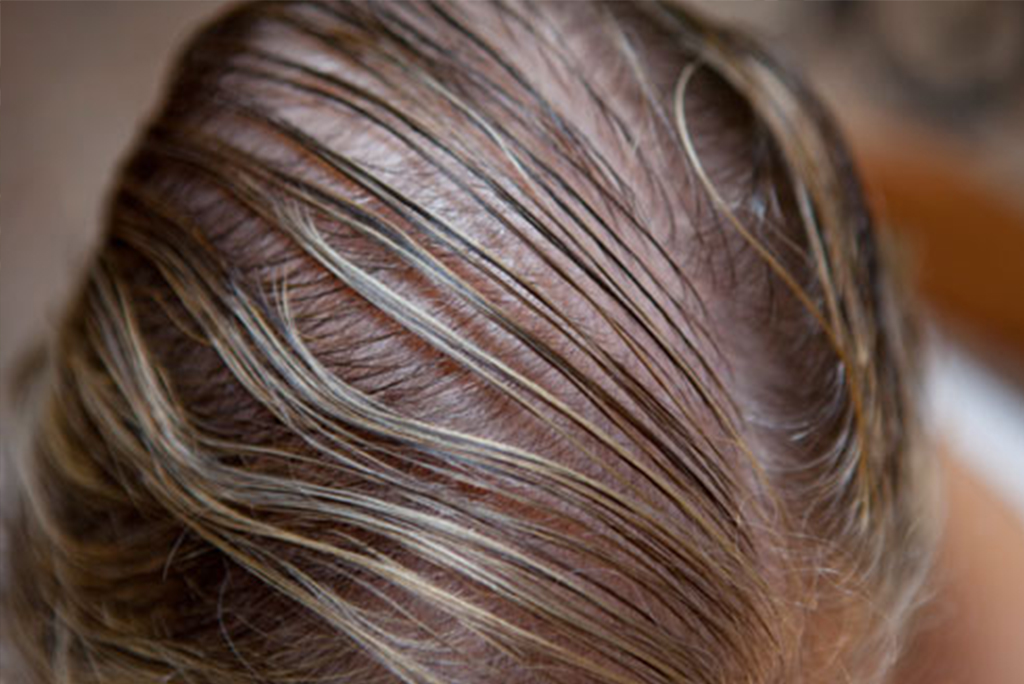Hair loss and thinning hair are common problems for many people. Anything from hormones, stress, and over-styling to depression or a bad dye job could be the cause. If you’re looking for ideas on how to manage thinning hair, read on for the most popular tips, tricks, and advice.
1. Loosen that Tie
Between expectations to look professional and keeping up with new hair trends, you could be constantly pulling your hair into painful positions that may be causing damage! Tight ponytails, hair extensions, and even excessive blow-drying could be causing a lot of strain for your hair follicles. This results in loss of traction and alopecia. If you’re seeing thinning hair or lots of shedding, the problem may be your styling tools and techniques. Consider giving your hair a break from all those tight updos, extensions, and extra gel with looser styles that require less product and are gentler on your hair.
2. Eat More Protein
If you think your loss of hair has anything to do with nutrition, it could be that lack of protein is the culprit. A good strategy is to add a little more animal protein to your diet. Make sure that around half of your protein macronutrient quota comes from animals — chicken, fish, etc. Keeping track of the amount of protein you’re eating each day can show you what you’re missing in terms of proper nutrition. Aim for a minimum of 45 grams of protein per day to ensure you’re eating a balanced diet.
For vegans and vegetarians who abstain from animal products, you might try eggs (for vegetarians), avocados, nuts, seeds, and spinach.
3. Take Your Vitamins
Other nutritional deficiencies can also cause you hair loss problems, as low Vitamin D and B12 affect hair growth. You should look for foods with higher vitamin and mineral content or take supplements to guarantee you’re getting all the nutrients you need. Vitamin B can be found in meat, fish, and dairy while Vitamin D is readily available in fatty fish, egg yolks, and vitamin-fortified foods like fruit juice and soy milk.
Another nutrient-rich source that many people swear by is green tea. All those antioxidants and vitamins can make a big difference!
4. Listen to Your Body
If you’ve already tried changing your hair styling and your diet and haven’t seen any improvement, it’s time to consider more serious concerns. Many medical conditions can cause hair loss and thinning. Thyroid conditions, especially Grave’s disease, and Hashimoto’s disease, often affect hair.
Left untreated, thyroid conditions can cause your hair to become dry and thin out. You might also be experiencing weight fluctuations, fatigue, and dry skin. Thyroid testing can be conducted through a quick blood draw at your general practitioner’s office.
5. Try Laser Phototherapy
Cheap hair restoration is not a solution to your thinning hair, but there are treatments out there that can really make a difference. Laser phototherapy is one method of improving your hair growth and structure with minimal side effects. Unlike lotions and pills, you won’t see any scalp irritation or damage to the follicles.
Laser phototherapy works by flooding your scalp with photons. These energize your hair follicles and encourage them to grow new hairs. This type of therapy also promotes blood circulation that brings nutrients and oxygen to existing hair follicles and helps them grow stronger and faster.

